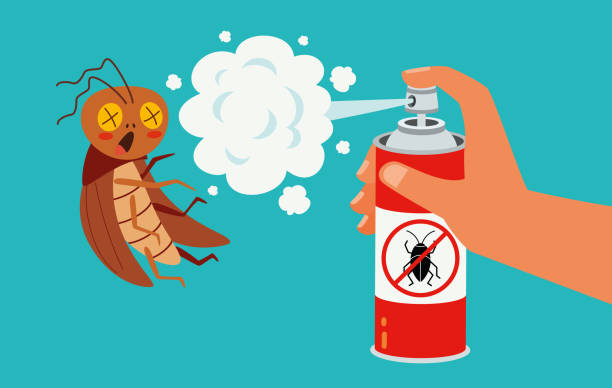The Ultimate Guide to Cockroach Pest Control in Singapore

Cockroaches are among the most prevalent pests in Singapore, infamous for their remarkable resilience and adaptability in a wide range of environments. These hardy insects are more than just a simple annoyance; they are notorious for their capacity to carry and spread various pathogens that can lead to significant health issues. By contaminating food, utensils, and cooking surfaces, cockroaches can transmit bacteria and viruses that may cause diseases such as salmonella, E. coli infections, and other gastrointestinal disorders. Moreover, they are known to trigger allergic reactions and exacerbate asthma symptoms, particularly in vulnerable populations including children and the elderly.
Given their rapid reproduction rates and secretive nature, cockroaches can quickly become a formidable problem in both residential and commercial settings. Therefore, implementing effective cockroach control measures is essential for ensuring a safe, hygienic, and comfortable living or working environment. This guide aims to provide a thorough exploration of the best practices, proven methods, and most effective solutions available for managing and eradicating cockroach infestations in Singapore. From preventive tips to professional pest control strategies, we will cover all you need to know to protect your space from these persistent pests. Whether you’re dealing with an existing infestation or looking to prevent one, this guide offers valuable insights and practical advice tailored to the unique challenges posed by cockroaches in Singapore’s tropical climate.
Understanding Cockroaches in Singapore
Before delving into control methods, it’s essential to understand the types of cockroaches commonly found in Singapore and why they are considered pests:
American Cockroach: The largest type typically found in homes and businesses. They prefer warm and moist environments.
German Cockroach: Smaller than their American counterparts, these are the most common species in Singapore. They often inhabit kitchens and bathrooms.
Brown-Banded Cockroach: Known for their preference for warmer and drier locations, they can be found around appliance motors or electrical sockets.
Cockroaches can enter homes through various means such as luggage, furniture, or even through drains and ventilation systems. Once inside, they can quickly establish colonies if not controlled effectively.
Health Risks Associated with Cockroaches
Cockroaches are notorious vectors of disease, capable of carrying a plethora of pathogens that pose serious health risks to humans. These resilient pests are known to transmit a variety of illnesses including salmonella, dysentery, and gastroenteritis, conditions that can result in severe gastrointestinal distress and, in some cases, more serious health complications. The risk of contracting these diseases is particularly elevated in environments with suboptimal sanitation practices, where food is improperly stored or left exposed, creating an inviting feeding ground for these pests.
Beyond their role as carriers of infectious agents, cockroaches contribute to indoor air pollution and can significantly compromise indoor air quality. Their droppings, along with the skin they periodically shed and their urine, contain potent allergens known to trigger allergic reactions and exacerbate respiratory conditions like asthma. These allergens are especially problematic for children, the elderly, and individuals with pre-existing respiratory sensitivities or immune vulnerabilities. In homes infested with cockroaches, the constant inhalation of these allergens can lead to chronic symptoms, including coughing, nasal congestion, skin rashes, and watery eyes, thereby reducing the overall quality of life.
The particles from cockroach droppings and shed skin can also become airborne and settle into carpets, bedding, and other fabrics, making complete removal challenging. Regular and thorough cleaning is required to minimize exposure, but in heavily infested environments, even diligent sanitation may not be enough to prevent these health risks.
Signs of Cockroach Infestation
Recognizing the signs of an infestation is the first step in controlling cockroaches. Common signs include:
Cockroach sightings: Seeing live or dead cockroaches around your home or business.
Droppings: Small, pepper-like specks near food areas or in corners of rooms.
Egg capsules (oothecae): These are oblong, brown structures that may be found in secluded areas.
Unpleasant odors: A strong, oily smell that can permeate areas where cockroaches are congregating.
Preventive Measures Against Cockroaches
Prevention is key in pest control. Here are several strategies to keep cockroaches at bay:
Seal entry points: Close gaps around doors, windows, and pipes to prevent entry.
Proper waste management: Seal garbage bins and dispose of waste regularly to avoid attracting cockroaches.
Food storage: Store food in sealed containers and never leave food out overnight.
Regular cleaning: Clean spills and crumbs immediately and manage grease, especially in kitchens.
Reduce moisture: Fix leaky pipes and use dehumidifiers in damp areas of your home.
DIY Cockroach Control Solutions
There are several DIY methods that can help control minor cockroach infestations:
Baits: Gel baits are effective as cockroaches consume the bait and return to their hiding places, often killing other cockroaches in the process.
Boric acid: A popular home remedy, sprinkle boric acid in areas where cockroaches frequent but be cautious as it can be toxic if ingested by pets or children.
Essential oils: Some essential oils, like peppermint, can act as natural repellents.
Professional Cockroach Control in Singapore
For severe infestations, professional pest control services are recommended. Pest control professionals use a variety of methods depending on the severity and location of the infestation:
Insecticidal sprays: Professionals may use more potent sprays that are more effective than over-the-counter options.
Gel baits and insect growth regulators (IGRs): These are more targeted approaches that disrupt the life cycle of cockroaches, reducing population over time.
Integrated Pest Management (IPM): This approach combines chemical and non-chemical methods tailored to your specific situation, ensuring long-term control.
Choosing a Pest Control Service in Singapore
When selecting a pest control service, consider the following:
Licensing and certification: Ensure the company is licensed and their technicians are certified by the Singapore Pest Management Association.
Experience and reviews: Look for companies with extensive experience and positive customer reviews.
Eco-friendly options: Consider companies that offer environmentally friendly pest control solutions.
Guarantee: Opt for services that offer a guarantee on their work to ensure effectiveness.
Conclusion
Cockroach control is a vital part of maintaining a healthy living environment in Singapore. By understanding the types of cockroaches, recognizing infestation signs, implementing preventive measures, and possibly seeking professional help, you can keep your home or business cockroach-free. Remember, the key to effective pest control is a combination of vigilance, maintenance, and professional intervention when necessary.
Effective cockroach management not only contributes to a cleaner and safer environment but also promotes overall wellbeing. Don’t let cockroaches take over your space—take action today and enjoy a pest-free tomorrow!


